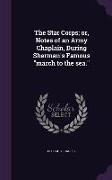Eurythmy and The English Language
BücherAngebote / Angebote:
Since its first appearance in the study-edition of Rudolf Steiner's lecture-cycle Eurythmy as Visible Speech (Anastasi Ltd, 2005) this contribution "Eurythmy and the English Language" by Annelies Davidson has proved its value. Packed with useful observations, and above all, an examination of the living principles, this essay is recognised as the definitive introduction to an important area of eurythmy research and practice. The writer reflects on years of artistic exploration of the English language with Marguerite Lundgren and on her own extensive work. Marguerite Lundgren was a living example of how it is possible to develop an ear for the creative impulses available especially in music and the sounds of speech. Along with other authorities, mention is made here of Marguerite's respect for the sensitive scholarship of Adam Bittleston - particularly evident in the study of Shakespare - and of the insights of the philosopher of language Owen Barfield. These scholars were profoundly aware of the work of the polymath and linguist Professor Hermann Beckh, who, as a foremost pupil of Rudolf Steiner, followed up Novalis' claim for "genetic etymology", for the creative sounds of speech. This Mystery wisdom goes back to the first known theory of language in Plato's dialogue Cratylus. Eurythmists attempt to access the primal creativity still available, as Steiner points out, in the language we speak today. In this way, in pursuing their art eurythmists aim to contribute to the renewal of the word in our time. ANNELIES DAVIDSON was born and educated in Holland. In 1974 she graduated from the London School of Eurythmy, England, taught around London and performed with the London Stage Group which toured Europe and the USA. From 1986-2002 she taught in the Eurythmy School, Spring Valley, New York and performed with the Ensemble. She currently works freelance as a teacher and director, focussing on eurythmy in relation to the spoken word.
Folgt in ca. 5 Arbeitstagen


